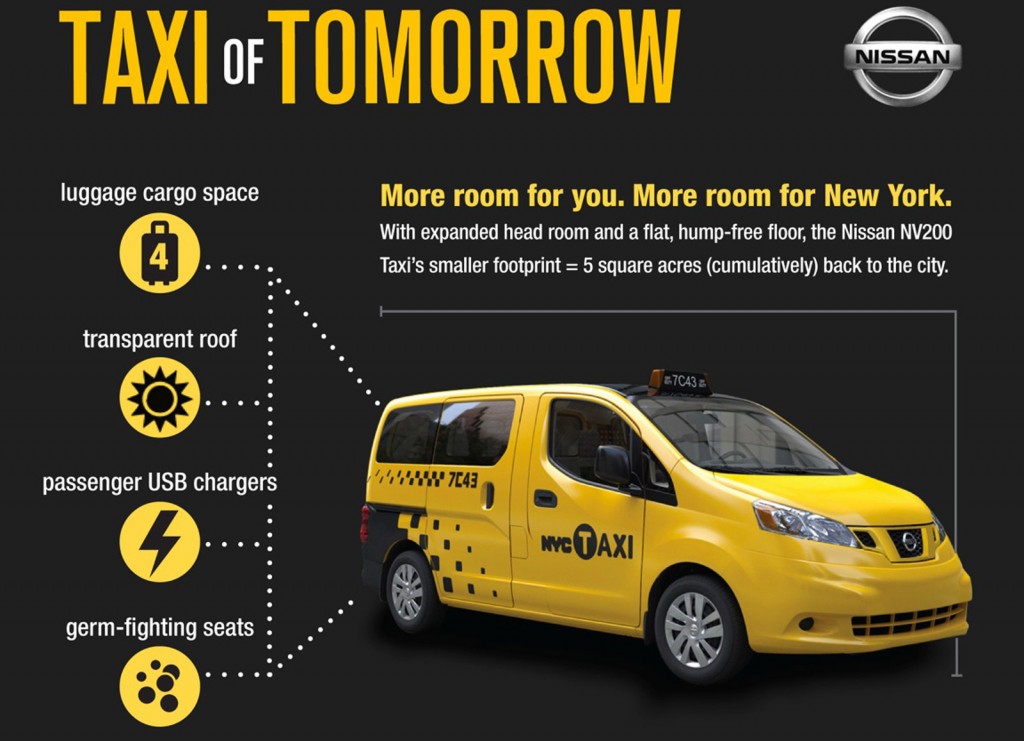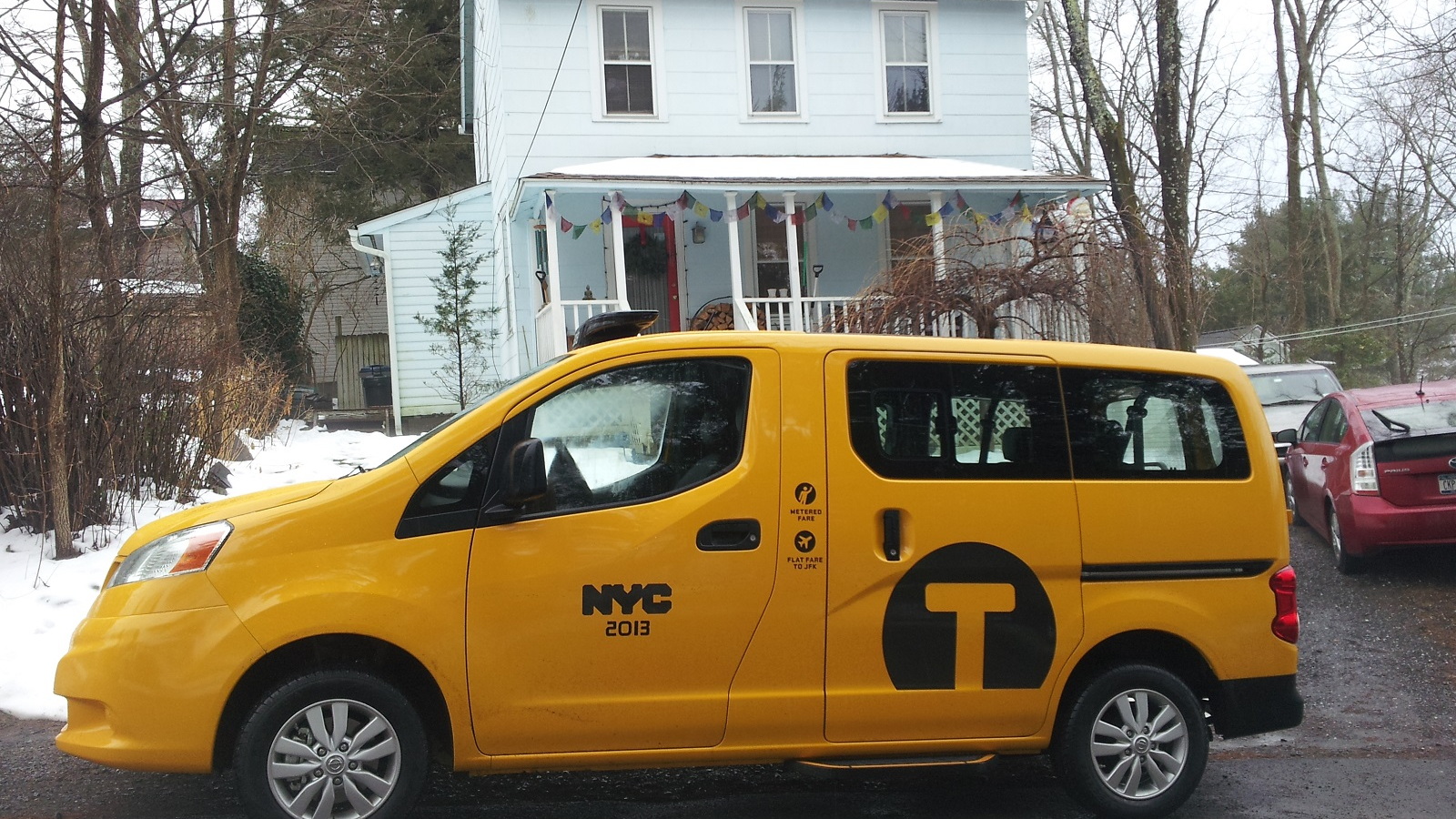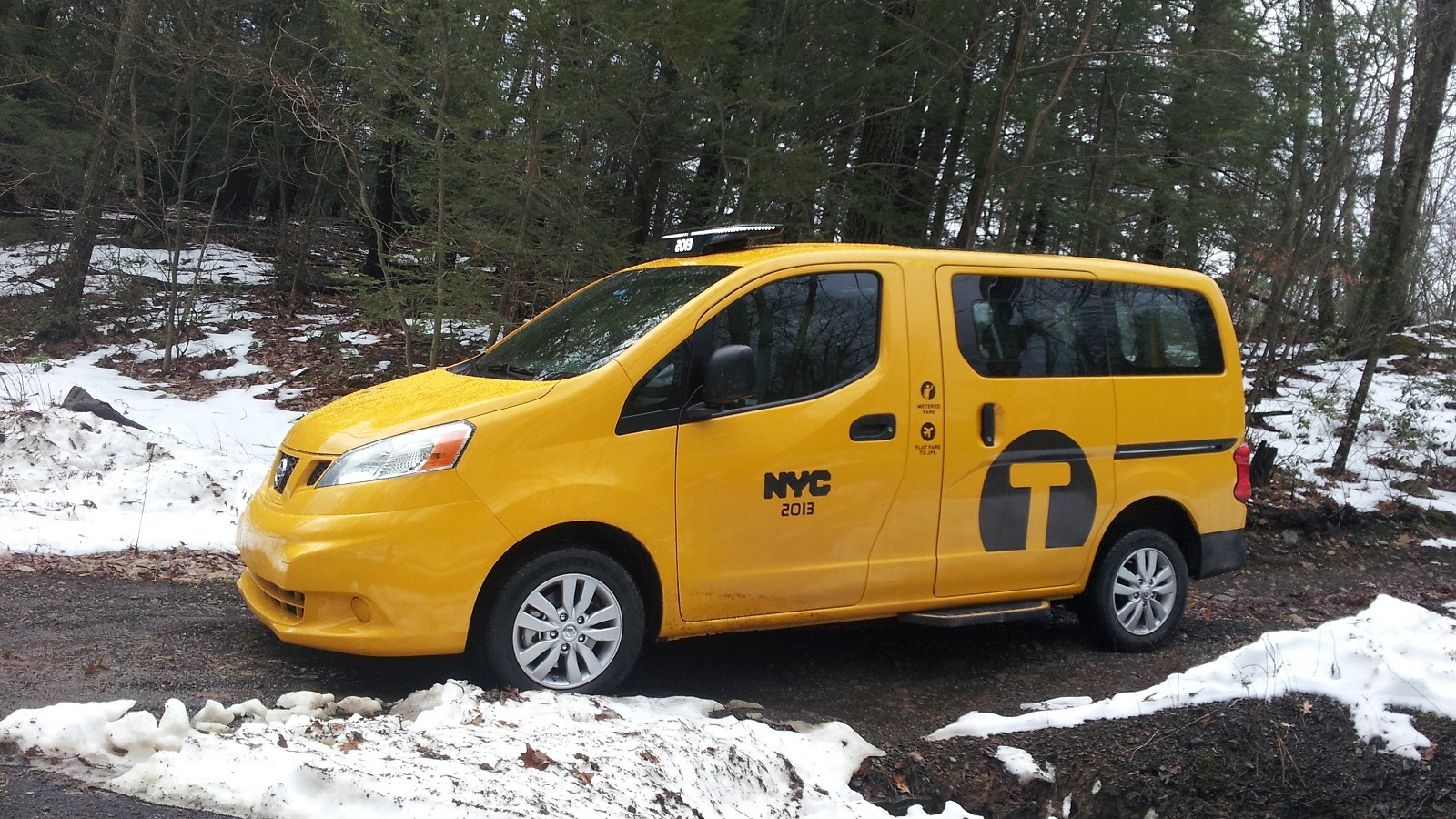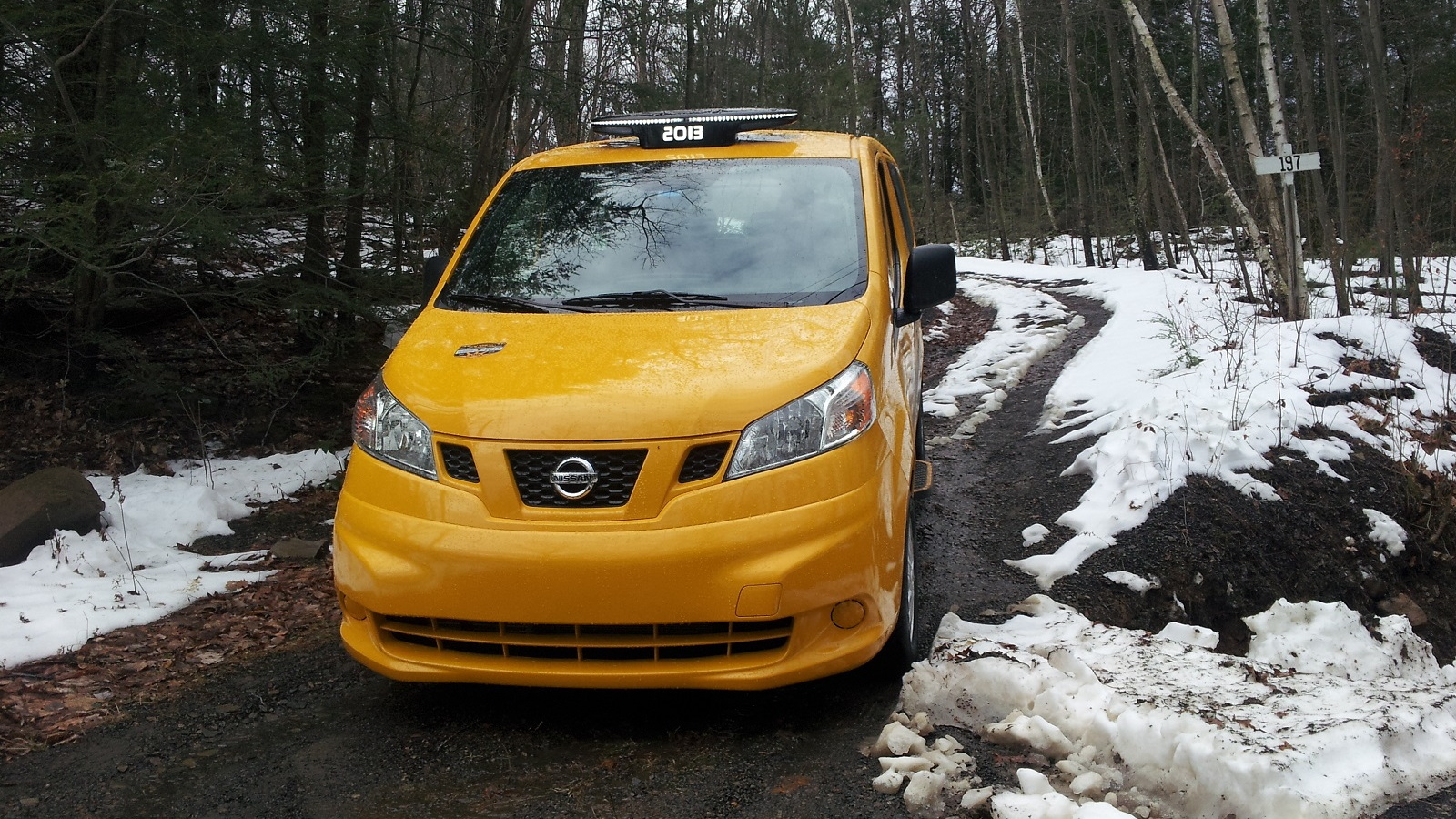If you're driving into rural areas to spend time with nature, there's nothing more noticeable than a bright yellow New York City taxi cab to do it in.
A couple of months ago, we had a chance to test out Nissan's new "Taxi of Tomorrow" for New York City, based on its NV200 small commercial van--but with a whole lot of updates.
Another outlet had already done the perfect article on using a NYC taxi to transport your friends, so we went in the other direction: up to the mountains.
While the NV200 Taxi is really meant mostly for city use, we covered our usual test route--267 miles this time--comprising two-thirds highway, one-thirds around-town stop-and-go errands and suburban traffic.
We achieved a combined gas mileage of 24.2 miles per gallon, right on the nose for the 24-mpg combined EPA rating assigned to the 2014 Nissan NV200 cargo van (24 mpg city, 25 mpg highway).
MUST READ: Chevy Volt Charging Cord Cut: Angry Neighbor, Electric-Car Hater?

Nissan NV200 'Taxi of Tomorrow' in New York City livery, road test, Dec 2013
The taxi differs from the cargo van version of the NV200 in many ways.
Among other things, the mandatory NYC taxi bulletproof partition is installed (by taxi specialists). Luckily, the wheelbase is still long enough to provide decent legroom for rear-compartment passengers--and proper operation of the side airbags and crash structures.
Nissan notes that its taxi is the only one that's been crash-tested with the bulletproof partition in place, a move that's long-overdue for the wide variety of converted passenger vehicles now serving as taxis all over the country.
From the outside, the Taxi of Tomorrow is [ahem] not the handsomest vehicle on the roads.
It's very tall and slab-sided, visually quite narrow, and it sits on extremely small 16-inch wheels that make it look top-heavy.

2014 Nissan NV200 Taxi, New York City's Taxi of Tomorrow
It's also not very powerful, with a 131-horsepower 2.0-liter four-cylinder engine driving the front wheels through a continuously variable transmission (CVT) in a heavy vehicle.
It is tuned to provide decent, if not speedy, acceleration up to about 50 mph. Above that range, it starts to run out of breath--and get noisy too.
DON'T MISS: Nissan Surveys Tesla Owners For Intelligence On Electric Cars
And even below that speed, the combination of lots of body roll and a lack of power meant that we were closely followed and then overtaken on a twisty uphill mountain road by an aggressively driven Toyota Prius hybrid.
More random impressions from driving the taxi for five days:
- The driver's seat is excellent, and appears to be far more supportive and better-padded than the passenger's seat--it was as comfortable as those in pricey German sedans
- The contrasting yellow stitching on the black vinyl seats, and the very visible bright-yellow seat-belt receptacles in the rear passenger compartment, are both stylish and smart design
- The door mirrors are large and provide superb visibility, unlike the shrinking door mirrors found on many cars these days to reduce wind resistance
- But among small windows, vertically split rear doors, the glass roof for passengers, and reflections from the bulletproof glass, rear vision was minimal and compromised
- The rear-view camera helps address that
- The driver gets a 12-Volt power outlet, a USB port, and on our test vehicle, even satellite radio--sweet!

Nissan NV200 'Taxi of Tomorrow' in New York City livery, road test, Dec 2013
SEE: Home Owners Associations & Electric Cars: How To Make It Work (Advice From A Pro)
We also tested the taxi by riding around in the rear, where it is clearly head and shoulders above any converted Ford Escape or C-Max, Toyota Prius, or any crossover or sedan:
- Asymmetric rear doors--the curb-side right-hand door is longer than the left--make access easy
- There's an intercom to communicate with the driver, rather than yelling through the change slot cut into the bulletproof glass
- The now-mandatory heat/air-conditioning vents for the rear compartment worked fine
- The presence of a USB port to charge mobile devices finally brings NYC taxis into the 21st century
- Steps that automatically slide out from under the cab when the door is opened were a nice touch, though they seemed unnecessary to us given the low floor
Overall, our test cycle isn't set up to replicate taxi duty, but the 24-mpg rating seems justifiable even if the cabbie has a heavy foot.
And they're much better from the back seat than any other cab--not that taxi owners much care about that.
_______________________________________________



















